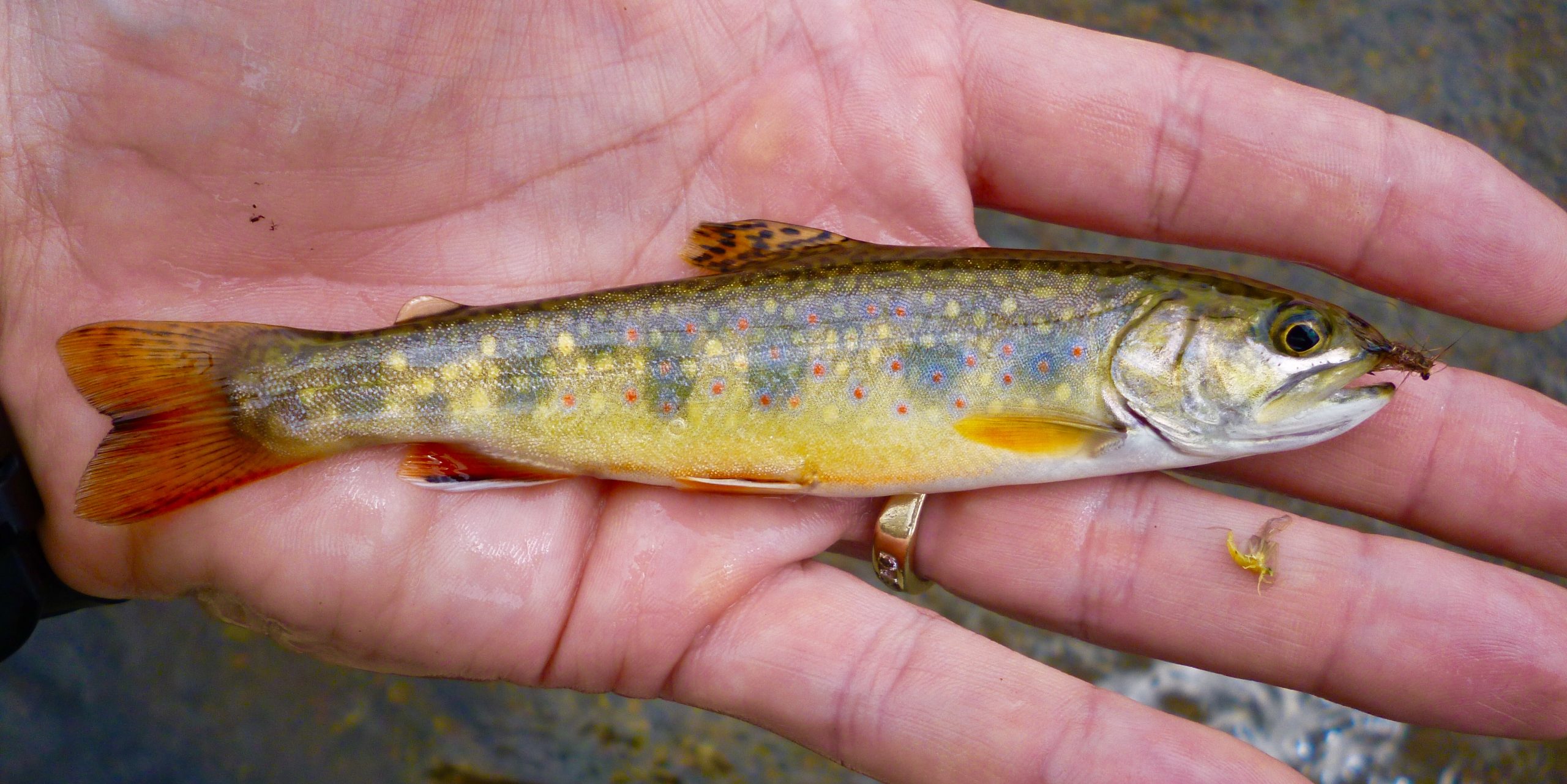With a number of fly-fishing clubs asking me to build a presentation geared more towards “beginner” fly-fishers- I sat down and gave it some thought. Since I had just turned fifty, I decided to compile a list of 50 things I had learned over the years as it relates to fly-tying and fly-fishing. Figuring that people would rather look at pictures, than just hear me ramble, I started searching for pictures we had taken over the years that would best exemplify each item on my list. The end result of this fun & memorable project is a new presentation I have called – “50 pictures – 50 fly-fishing tips”. Attached is a PDF document listing the 50 tips, tools and techniques. While you might not live close enough to catch one of my “edu-comedy” presentations- I thought you might like to see the list. Remember, the first goal is hopefully to share a few concepts or thoughts with you that you might not have previously considered. The second goal is to have you put a few into practice wherever you may fish to improve your fishing experience. The third goal is to have you show a couple to others and “pay it forward”.
Fishing Gear Tips
• Don’t buy the most expensive and don’t buy the cheapest. Price is only an issue in the absence of value.
• Research what best fits your interests (warm water vs. cold, local vs. travel, small quarry vs. large)
• Take comfort, fit & function over image & appearance.
• Try different fly lines & sizes on various rods- it may be easier than changing your casting stroke.
• Have the proper tool for the job.
Clothing and Accessory Tips
• Polarized lenses are mandatory- various colors can help also. Try to block side glare as well.
• Drab clothing colors are preferred. Plenty of sun & bug protection exist today- it’s worth the cost.
• Plan ahead, wear and carry for the elements. A small day pack is very useful.
• Wading staffs, different wading boot bottoms, knee pads, light weight gloves help prevent injury.
• If you evolve into a minimalist, vet pockets, durability, Velcro and zippers before making purchases.
Casting and Line Control Tips
• It doesn’t matter how good or expensive your gear is if you can’t get the fly to the target-PRACTICE!
• Learn a number of casting strokes- they will help you in the wind; for long casts; with obstacles behind you; with overhead objects and different size flies and gear.
• Strengthen and try to use the correct muscles, especially before a trip.
• Understand when to have the fly line low and on the water vs. high and off the water.
• Learn loop control and release points.
Flies and Fly Tying Tips
• Use high quality (sharp) hooks and proper, clean tying materials.
• Tying flies can be very fulfilling and also often helps sharpen your ‘bug’ knowledge.
• Perfect specific patterns which increases your confidence level. Fish your ‘confidence’ patterns.
• Learn different ways to weight flies as well as different ways dry flies sit on or in the water.
• Modify patterns to adapt to conditions- light levels, wind for casting or drifting, soft water vs. rough.
Presentation Techniques or Tips
• Use shade to your advantage by standing in it and casting into it.
• Try fishing water near the banks and try casting back away from the bank.
• Understand how the wind might be moving food sources and use it to your advantage.
• Put wind and sun behind you when you can.
• Break larger water down into smaller segments.
• Understand how “dropper” systems work at different lengths for dry and wet presentation.
• Add movement to your fly- under most circumstances, it can be a primary trigger.
• Try laying your fly line on dead water or objects (streambank) for proper drift.
• Use the loop in your fly line as a strike indicator and as a tool to add movement to streamers.
• Keep your line tight and lead the fly slightly in currents – under most scenarios.
Rules to Fish By
- Don’t leave rising fish.
- A fly on the water, stays on the water.
- Move your fly before you start your cast.
- Have a plan to land a big fish…… you don’t expect to catch.
- Fish your way into a stream.
- Don’t strike too soon.
- Keep a low profile.
- Have patience, listen, and watch – it’s called fishing not casting.
- Foam is home.
- Trout eat a ‘drift’.
- Know how to fight a fish and release a fish.
- Bad things begin to happen when you have a lot of line out.
- Don’t cast farther- get closer to the fish- it’s surprising how close you can be to most fish.
- Have a plan “B”! (broken gear, lost luggage, bad weather, crowds, etc)
- Fish aren’t smart……..but you can easily insult their “instincts”.
- Take a child fishing.
- Teach others about fly-tying and fly-fishing so you can learn what you don’t know.
- Hire a guide. Let your guide fish- it benefits both of you.
- Invest money to take fly-tying and casting lessons.
- Have fun and ask yourself- “is it really about catching the fish”?

